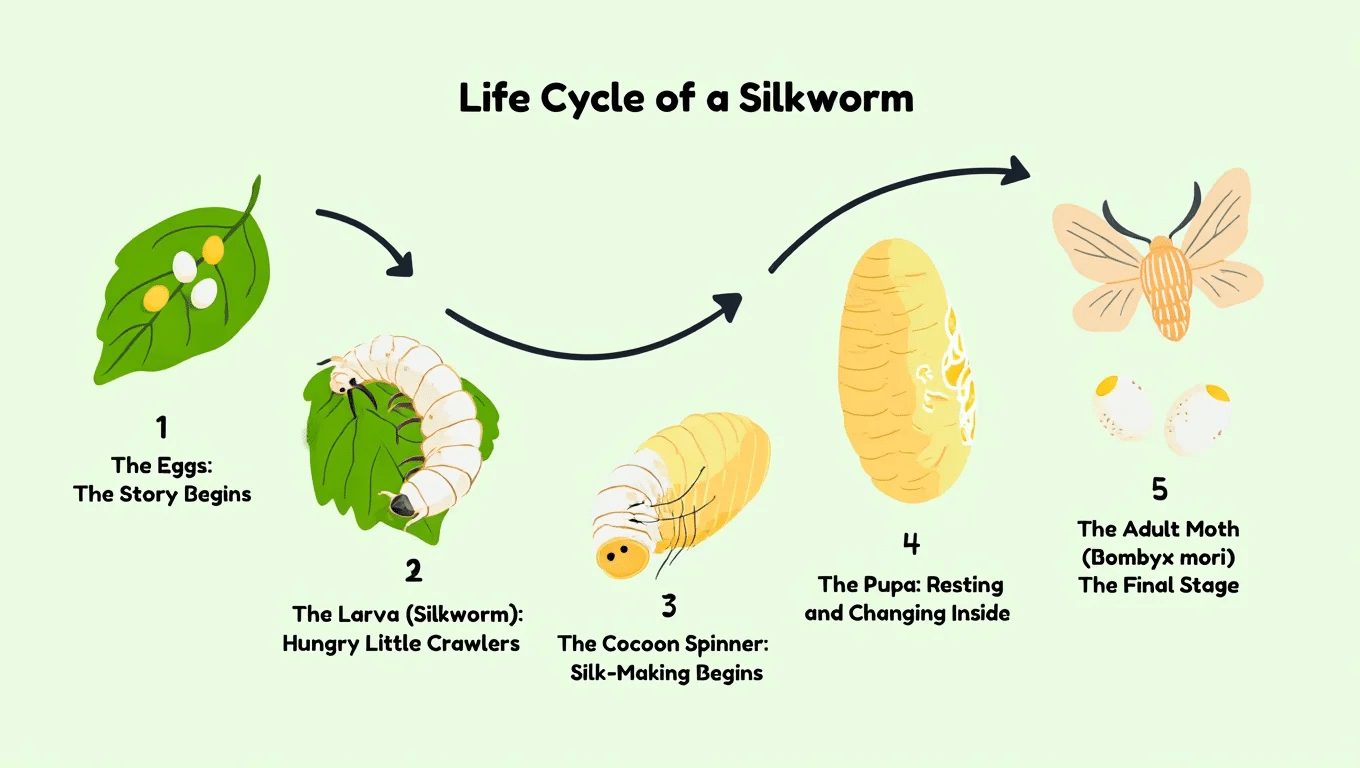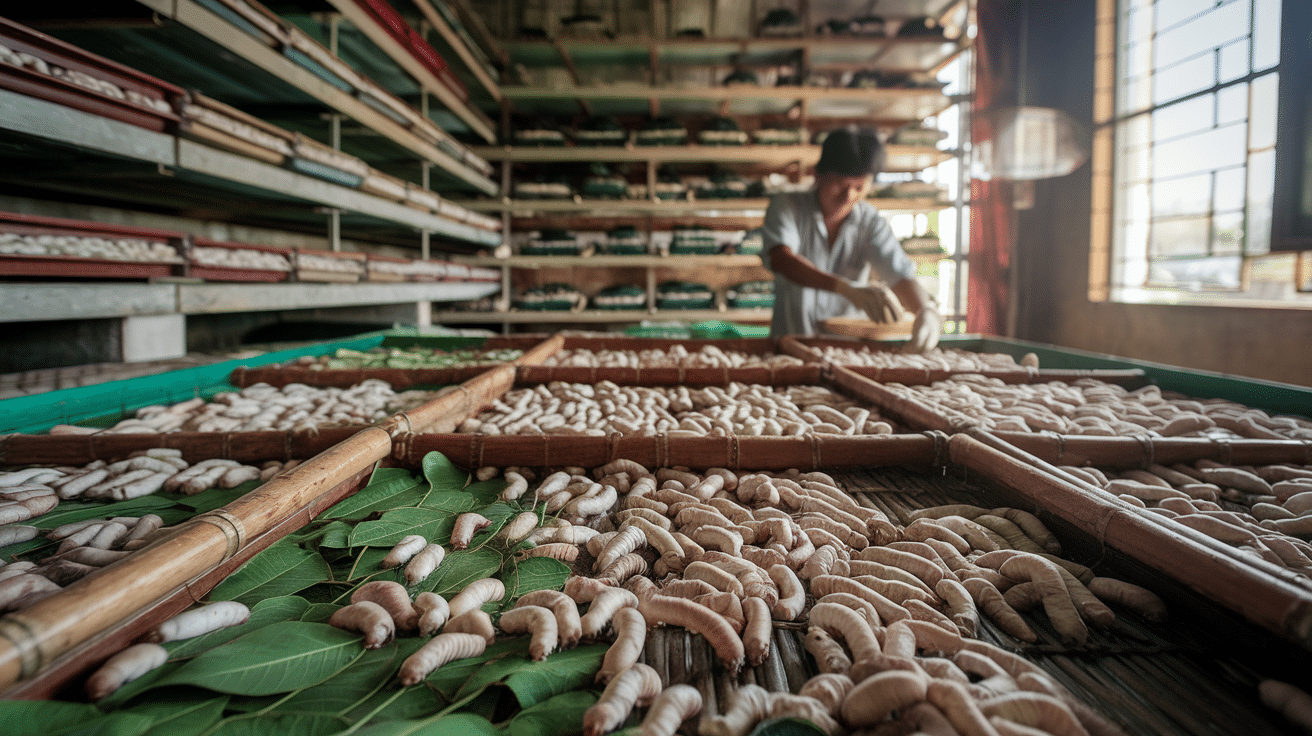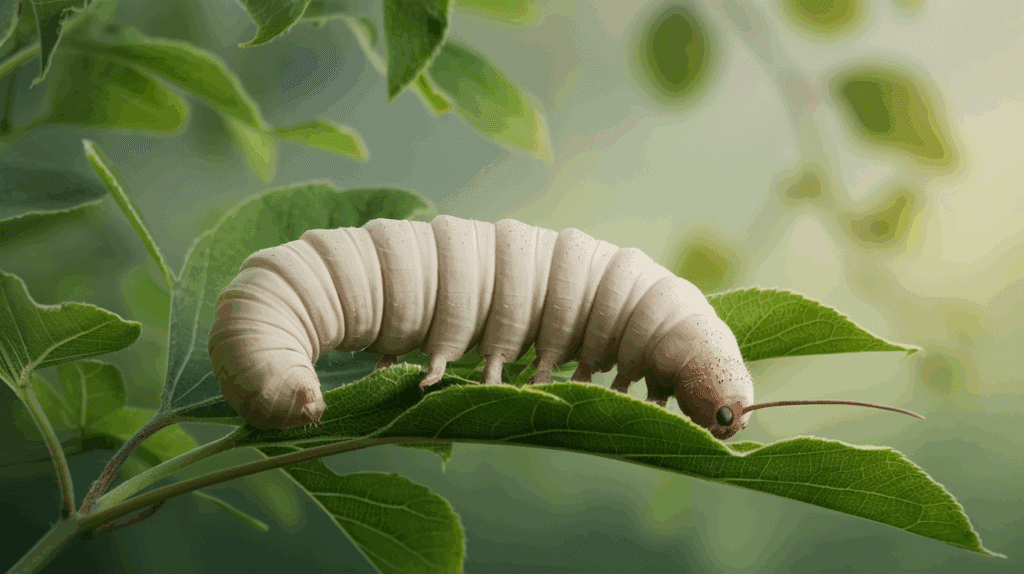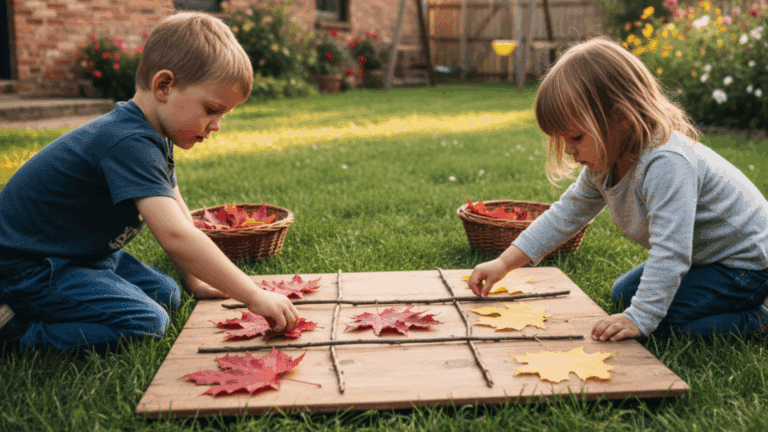Silkworms are small insects that create something wonderful, the silk thread that becomes our clothes.
But here’s what most people don’t know: these little creatures go through five completely different stages before they can make silk.
The life cycle of a silkworm for kids teaches patience, growth, and the magic that happens in nature.
Let’s follow this tiny insect through each stage and see how it changes from a dot-sized egg into a silk-making master.
The Life Cycle of a Silkworm Made Easy

Think of a silkworm’s life as the ultimate makeover story. This little creature doesn’t just grow bigger – it completely changes its body four different times!
Scientists call this process metamorphosis, but kids can think of it as nature’s magic trick where one animal becomes something totally different.
Stage 1: The Eggs
Every silkworm starts as a tiny egg. This first stage of the silkworm’s life cycle for kids shows how something so small can hold such big potential.
| Egg Details | What Kids Should Know |
|---|---|
| Size & Shape | Small, round dots about the size of a pinhead |
| Color | Usually yellow or white |
| Texture | Feel slightly sticky to touch |
| Time Period | 10-14 days in warm weather; can stay dormant all winter if cold |
| Location | Laid on mulberry leaves, paper, or cloth in silk farms |
| Quantity | Each female moth lays 300-500 eggs at once |
These tiny eggs are special because they contain everything needed to create a silk-spinning insect.
Stage 2: The Larva (Silkworm)
When the egg hatches, out comes a tiny caterpillar called a larva. This second stage of the life cycle of a silkworm for kids is all about eating and growing bigger.
What they look like: They’re small, white or cream-colored caterpillars, about 3mm long when first hatched, soft, segmented bodies with tiny legs and black heads that stand out from their pale bodies.
Their daily routine: They eat mulberry leaves all day long and sleep for short periods and grow so fast their skin becomes too tight.
The larva molts (sheds its skin) exactly 4 times! Each time, it gets bigger and stronger. After 25-35 days of non-stop eating, the caterpillar is ready for its next big change.
Stage 3: The Cocoon Spinner
After weeks of eating, the caterpillar is ready for the most exciting part of the life cycle of a silkworm for kids, making its cocoon.
How they spin silk: The caterpillar produces liquid silk from special glands and moves its head in figure-8 patterns. It takes 3-4 days to complete the cocoon
What the cocoon contains: One continuous silk thread up to 1,000 meters long, made from protein the caterpillar stored from eating leaves. It forms a protective oval shell around the caterpillar.
Why do they build cocoons: It is a safe place to change into a moth, provides protection from predators and weather, the perfect environment for their final change
The caterpillar stays inside for 10-14 days while magic happens.
Stage 4: The Pupa
Inside the cocoon, the most important part of the life cycle of a silkworm for kids takes place – the caterpillar changes into a completely different creature.
What happens inside: The caterpillar’s body breaks down and rebuilds itself. Its wings, antennae, and reproductive organs start forming. The creature becomes a pupa (chrysalis stage). No eating or moving happens during this time.
How long does it take: This process cannot be rushed or stopped and usually takes 10-14 days in warm conditions and longer in cooler temperatures.
Why this stage matters: Final preparation before becoming an adult moth as body completely reorganizes from caterpillar to flying insect. This critical time determines if the moth will be healthy.
Stage 5: The Adult Moth (Bombyx mori)
After two weeks inside the cocoon, a fully grown moth breaks free. This final stage of the life cycle of a silkworm for kids shows how the circle of life continues.
| Moth Characteristics | Details |
|---|---|
| Appearance | White or cream colored with fuzzy wings |
| Size | About 1-2 inches across |
| Lifespan | Lives only 5-10 days |
| Main Job | Mating and laying eggs |
How the cycle continues: Male and female moths mate within days of emerging. Females lay 300-500 eggs on mulberry leaves. The adult moth completes the circle, and soon new baby caterpillars will begin their own silk-making story.
How Do Farmers Raise Silkworms?

Raising silkworms is called sericulture. It’s like having a very special farm where farmers take care of tiny caterpillars instead of cows or chickens.
Sericulture: From Farm to Fabric
Farmers create perfect homes for silkworms by building special rooms that stay warm and clean. The temperature must be between 75-85°F at all times.
They feed the caterpillars fresh mulberry leaves several times each day and clean their beds regularly. The rooms need good air flow, but no strong winds.
Farmers also keep the lights dim because silkworms prefer darkness. Every stage needs different care, so farmers watch the caterpillars closely as they grow and change.
Harvesting the Cocoon: A Careful Process
Farmers collect cocoons 8-10 days after caterpillars finish spinning them. This timing prevents moths from breaking out and damaging the silk thread.
First, farmers sort cocoons by size and quality. Then they place cocoons in hot water to soften the silk. Farmers carefully find the thread’s end and start unwinding it, which later becomes beautiful fabric.
Interesting Facts About Silkworms for Kids
Now that kids know how silkworms grow and change, here are some cool facts that will make them even more excited about these tiny creatures.
- Picky Eaters: Silkworms only eat mulberry leaves. They won’t touch any other type of leaf, making them one of the pickiest eaters in the insect world.
- Silk is stronger than steel: Silk thread is actually stronger than a steel wire of the same thickness. Nature made it super tough!
- They can’t fly: Adult silkworm moths have wings but can’t fly properly. They’ve been raised by humans for so long that they lost this ability.
- Silk road connection: Thousands of years ago, people traded silk across continents. This trade route was called the Silk Road.
- They make noise: Silkworms make soft munching sounds when they eat. In a room full of hungry caterpillars, it sounds like gentle rain falling.
- Color-changing cocoons: Most cocoons are white or yellow, but some silkworms make golden, green, or even pink cocoons depending on their breed.
- Swimming allowed: Silkworms hate water. Even a few drops can make them very sick. Farmers must keep them completely dry.
- Sleep schedule: Baby silkworms sleep for about 24 hours each time they’re ready to shed their skin. They stop eating and stay perfectly still.
- Silk was once worth gold: In ancient times, silk was so valuable that people traded it for the same weight in gold. Only rich people could afford silk clothes.
- They’re homebodies: Silkworms have been living with humans for so long that they can’t survive without human care. They’re completely domesticated insects.
Conclusion
Learning about the life cycle of a silkworm for kids shows just how incredible these small creatures really are.
From tiny eggs to silk-spinning caterpillars to flying moths, silkworms prove that big changes can happen in small packages.
They feed us, clothe us, and teach us that transformation is possible at any stage of life.
Just like silkworms take time to grow through each stage, children can learn that good things come to those who wait and work steadily toward their goals.


















